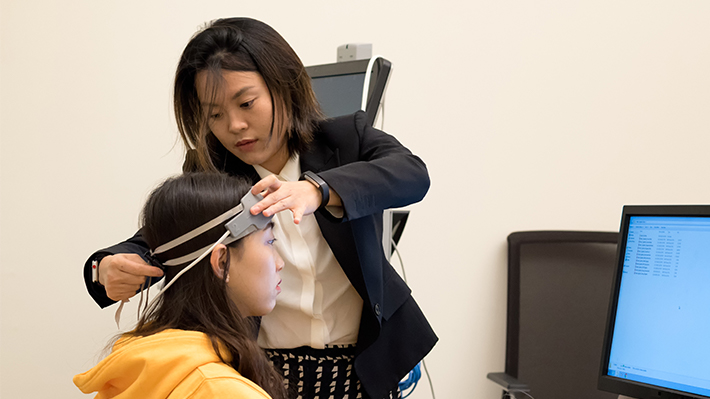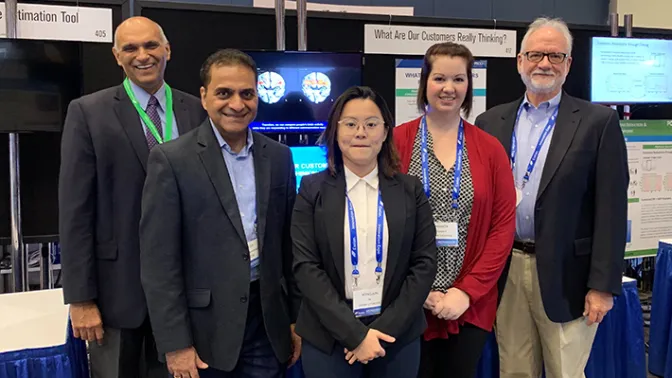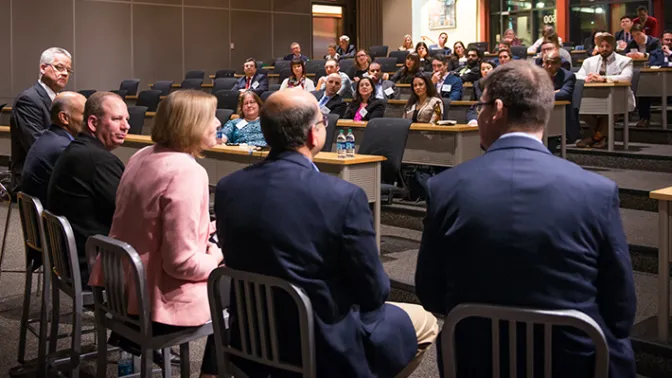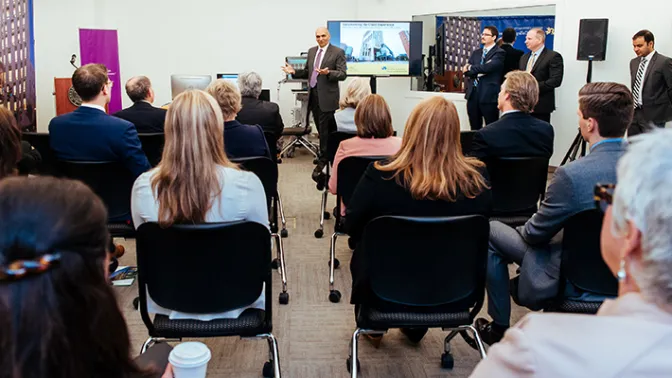
Curiosity Fuels Research for Marketing PhD Student
Curiosity comes naturally to Hongjun Ye, a PhD student from Guangzhou, China.
Her broad range of interests, including in history, art and music, have led her to explore interdisciplinary collaborations and use some outside-the-box skills in both her research in the consumer behavior area of marketing and in projects organized through Drexel Business Solutions Institute.
In collaboration with her PhD supervisor, professor of marketing and Vice Dean for Research and Strategic Partnerships, Rajneesh Suri, Ye has led experiments in LeBow’s Neuro-Behavioral Lab undertaken for corporate partners: one on “smart drinks,” investigating potential impacts on memory and cognitive function, and another for a utility company on attitudes toward pricing plans.
For the latter project, “we’re interested in knowing people’s reaction to dynamic pricing,” she says, further explaining that a utility has different rates for peak and off-peak usage. “People get reluctant to switch to that plan – why do they struggle with it? How can we make it easier to understand and make it more likely for them to accept the plan?”
For this project, Ye worked with a team of LeBow and Biomedical Engineering students – her fellow PhD students, as well as with masters and undergraduate students – on a complex, multistage experiment involving phone interviews, online surveys and sessions in the Lab.
In the lab, participants were asked about their interest in these different utility plans both before and after viewing one of two videos that emphasize the environment and human impact on climate – though Ye edited both to provide different images, text and sounds. “We want to know which is the most effective and, at the same time, which ones makes people feel happier or less anxious” about their decision, she says.
Because people might have trouble articulating what they think or are reluctant to share their true feelings, consumers participating in the lab wear a functional near-infrared (fNIR) imaging device that records their brain activity and a galvanic skin response (GSR) device to measure their skin conductivity while watching the videos and answering questions. “The brain won’t lie,” she says. “If you put the device on their head and the GSR device to measure their skin conductance (electrodermal response), that tells us.”
As an academic researcher, Ye says she always asks, “How can we design an experiment that can satisfy corporate clients’ needs, but at the same time find interesting results that we can use?” Research projects with corporate clients, she says, have “helped me become a better researcher and a better teacher, too.”
“From working on these projects, I’ve learned how to work with clients - what’s the procedure, what do they want, what to expect. When I’m teaching, I realize students are a lot more interested in these aspects than just theories and concepts from a textbook.”
These projects also have also involved collaborations with faculty and students from the College of Arts and Sciences and the College of Biomedical Engineering; they’ve trained Ye in operating technology like the fNIR and GSR devices and in learning various software programs for analyzing the data and interpreting the results. “Students in consumer behavior don’t ordinarily get to learn that kind of thing,” she says.
In addition to her close work with Suri, Ye cites assistant professor of marketing Elea Feit for her influence on Ye’s knowledge of the quantitative side of marketing. “She’s able to explain complicated things in a very simple way,” she says. An upcoming project will see Ye collaborate with Feit on a conjoint study, looking at tradeoffs between different combinations of product features.
Her primary research interest is in sensory marketing, especially related to color. One recent project, which she presented at the Association of Consumer Research conference in 2018, looks at the color of sale signs: “I wondered, why are they all in red and not another color? Do people associate red with being on sale?” She subsequently devised an experiment using a self-designed flyer contained 16 pairs of prices and product images; on only one, the price is listed in red. “I asked the participants, which product is on sale? I didn’t mention the discount.”
The majority said the red one, and Ye wondered if this trend would have an influence on the surrounding products in the flyer as well. She plans to do experiments using eye-tracking technology to further study people’s perceptions of this phenomenon.
For Ye, new ideas for research topics and experiments seem to come to her all the time. “My undergrad was in history, and I was supposed to be a high school history teacher,” she says. “During my undergrad I was very involved in the arts and entertainment industry, and I worked with a lot of graphic designers, dancers and musicians.”
She first came to the US in 2014 for master’s studies in arts management at Columbia College Chicago and planned on a career as an artist manager, but after a class that touched on behavioral economics, she changed course once again. “I looked up articles, and the more that I read, the more that I felt I want to know much more,” she says.
Ye’s background in the arts has provided her with skill in video and audio editing videos, which she’s used in preparing experiments and in communicating with corporate clients, and she has an eye toward working with visual art students from the Westphal College of Design. As new collaborations come along, she remains open to all kinds of new discoveries: “I think everything is related.”


